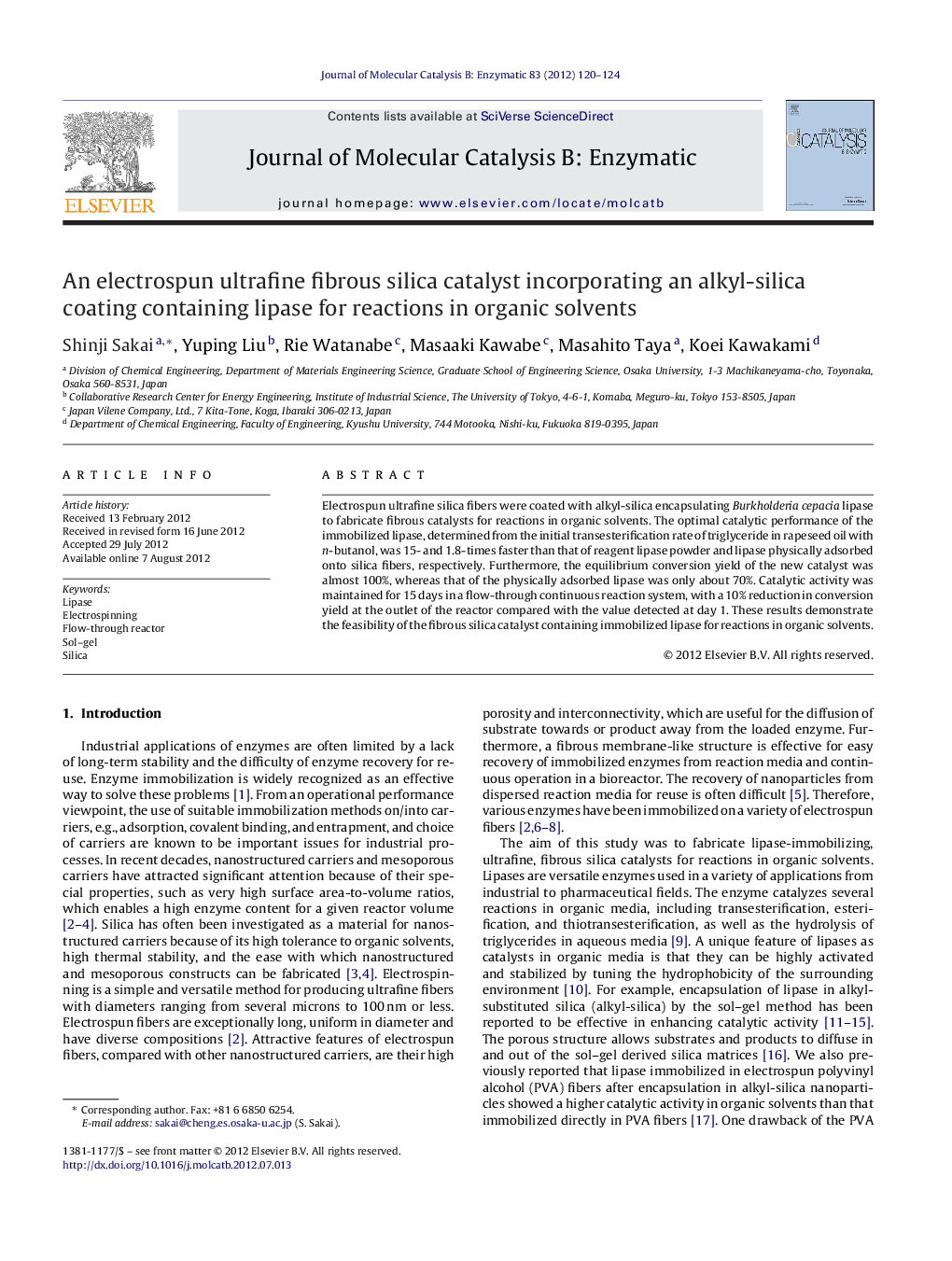| Article ID | Journal | Published Year | Pages | File Type |
|---|---|---|---|---|
| 69954 | Journal of Molecular Catalysis B: Enzymatic | 2012 | 5 Pages |
Electrospun ultrafine silica fibers were coated with alkyl-silica encapsulating Burkholderia cepacia lipase to fabricate fibrous catalysts for reactions in organic solvents. The optimal catalytic performance of the immobilized lipase, determined from the initial transesterification rate of triglyceride in rapeseed oil with n-butanol, was 15- and 1.8-times faster than that of reagent lipase powder and lipase physically adsorbed onto silica fibers, respectively. Furthermore, the equilibrium conversion yield of the new catalyst was almost 100%, whereas that of the physically adsorbed lipase was only about 70%. Catalytic activity was maintained for 15 days in a flow-through continuous reaction system, with a 10% reduction in conversion yield at the outlet of the reactor compared with the value detected at day 1. These results demonstrate the feasibility of the fibrous silica catalyst containing immobilized lipase for reactions in organic solvents.
Graphical abstractFigure optionsDownload full-size imageDownload as PowerPoint slideHighlights► Electrospun silica fibers were coated with an alkyl-silicate layer containing lipase. ► The lipase-immobilizing fibrous catalyst successfully worked in an organic solvent. ► The catalytic activity was 1.8 times greater than that of physically adsorbed lipase. ► The catalyst worked for 15 days with a 10% reduction in catalytic performance.
